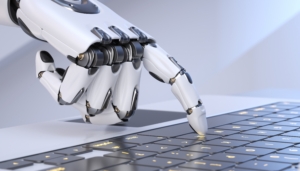As technology advances, healthcare robotics is emerging as a promising field that could revolutionize the delivery of medical care. In this article, we explore healthcare robotics and how it can leverage automation and artificial intelligence (AI) to transform the way medical care is provided. We also discuss the potential benefits of implementing such technology and where it can go in the future.
Introduction: What are Healthcare Robotics?
Healthcare robotics is a rapidly growing field that transforms medical care into automation and artificial intelligence. Robotic technology has the potential to revolutionize healthcare, making it more efficient and effective while delivering better patient outcomes.
There are many different types of healthcare robots, from those that assist doctors and nurses with their work to those that provide direct patient care. Healthcare robots can be used for a wide range of tasks including
• Performing surgery
• Assisting in physical therapy
• Dispensing medication
• Transporting patients
• Monitoring patients’ vital signs
Healthcare robotics is still in its early stages; however, its potential applications are limited. As technology continues to evolve, we expect to see even more amazing innovations in healthcare robotics that will transform the way we receive medical care.
Benefits of Healthcare Robotics
Healthcare robotics has several potential benefits. One key benefit is the potential of robots to help reduce the costs associated with medical care. For example, hospitals and other medical facilities may be able to use robots to help with tasks such as cleaning, laundry, and transportation, which can free staff time and resources. Additionally, robots can be used to assist with surgeries and other medical procedures, which can help improve safety and accuracy, while also reducing surgical times.
Another benefit of healthcare robotics is its potential for improved patient care and outcomes. For instance, robots can be used to provide physical therapy or rehabilitation services to patients recovering from injuries or illnesses. Additionally, robotic technology can be used in telemedicine applications to remotely monitor vital signs and provide timely interventions when necessary. Ultimately, by automating certain aspects of medical care, healthcare robotics has the potential to transform the way we deliver care and improve patient outcomes.
How is AI being used in healthcare robotics?
Robots are increasingly being used in healthcare and are often equipped with AI capabilities. AI can be used to help robots perform tasks, such as picking up and handling delicate objects, providing support and assistance to patients, or even autonomously performing certain medical procedures.
One example of a healthcare robot that is beginning to be used in hospitals is the da Vinci Surgical System. This robot-assisted surgery platform allows surgeons to operate with greater precision and control. The da Vinci system has been approved for use in several surgeries, including heart surgery, prostatectomy, and gynecologic surgery.
Another example of a healthcare robot is the RP-Vita remote patient monitoring robot. This robot can be used to provide care to patients who are homebound or in remote locations. RP-Vita can record vital signs, monitor patients’ health status, and provide two-way communication between patients and their care providers.
AI is also used to develop robots that can provide social and emotional support to patients. These types of robots are sometimes called “companion robots.” An example of a companion robot is the Paro Therapeutic Robot, which is designed to provide comfort and companionship to people who are isolated or lonely. The Paro robot interacts with people through touch, sound, and sight, and it has been shown to reduce stress levels and improve mood in those who interact with it.
Current Applications of Healthcare Robotics
As medical technologies advance, so does the potential of healthcare robotics. These sophisticated machines are capable of performing a variety of tasks, from taking vital signs to delivering medication. Although they are not yet widespread, there are already a number of current applications for healthcare robotics in both hospitals and clinics.
One such application is surgery. Robots, such as the da Vinci surgical system, have been used for years to assist surgeons in performing complex procedures. More recently, these machines have been used to autonomously perform surgery in some cases. This allows for greater precision and accuracy as well as a reduced risk of infection.
Another area in which healthcare robotics is used is physical therapy. Rehabilitation robots such as Moxi can help patients regain movement and function after an injury or illness. These machines can provide personalized care and support to help patients reach their goals quickly.
In addition, there are several other potential applications in healthcare robotics still being explored. This includes everything from developing new drugs to providing social and emotional support to patients. As technology continues to evolve, it is likely that we will see even more innovative uses for healthcare robotics in the coming years.
Medical Robotics for Surgery and Diagnosis
Medical robotics is a rapidly growing field in healthcare technology. Robotics offers many potential advantages for both surgery and diagnosis, including greater precision, lower invasiveness, and shorter recovery times. In addition, robots can be equipped with artificial intelligence (AI) to provide more accurate and reliable results.
Minimally invasive surgery (MIS) is one of the most promising applications of medical robotics. MIS refers to any surgical procedure that uses small incisions or punctures, rather than a large open wound. This type of surgery is associated with shorter hospital stay, less blood loss, and reduced scarring. Robot-assisted MIS allows surgeons to operate with even greater precision, which can further reduce complications and improve outcomes.
In addition to surgery, medical robots are being developed for use in diagnosis. For example, one company created a robot that can perform biopsies of suspicious growths without the need for invasive surgery. This technology can revolutionize the detection and treatment of cancerous cells.
As medical robotics technology continues to evolve, it has the potential to transform the way we provide health care. By increasing the accuracy and reducing invasiveness, medical robots can help provide better care while minimizing the risks associated with traditional procedures.
Challenges Facing Healthcare Robotics
Robots are increasingly used in healthcare to automate tasks and improve patient outcomes. However, several challenges must be addressed before healthcare robotics can truly transform medical care.
One of the biggest challenges is ensuring that robots are safe for use in patients. There have been several incidents where patients have been injured by robots; therefore, safety is a major concern. Additionally, robots must be able to work effectively with other members of the healthcare team, such as nurses and doctors. There needs to be a clear division of labor between humans and robots so that everyone knows what their role is and how they can best work together.
Another challenge is ensuring that robots are affordable. Healthcare costs are already skyrocketing, so adding expensive robots to the mix is not viable for most hospitals or clinics. It is important to find ways to make healthcare robotics more affordable so that more facilities can take advantage of their potential benefits.
Finally, there is the issue of public perception. Robots are still relatively new in the healthcare setting, and many people are unsure of them. There needs to be more education about how healthcare robotics can help improve patient outcomes before the general public accepts them.





